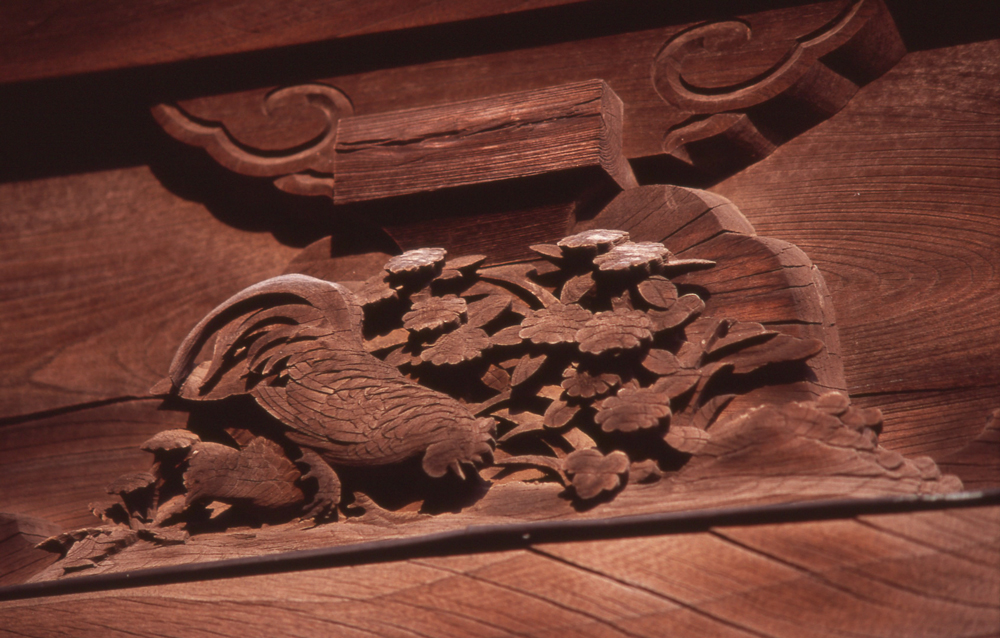NIKKOR - The Thousand and One Nights No.42

The E 75-150mm f/3.5, a Nikon Series E lens
This article is the last in the Nikkor Club series and NIKKOR the Thousand and One Nights series-–a project on which Mr. Sato and I embarked with enough enthusiasm to write 100 or even 1000 articles. Although this is the final installment that will appear in print in the magazine, the series will continue on the Nikon website. I sincerely hope you will continue to read it.
The final lens to appear in this magazine series is the E 75-150mm f/3.5, a Nikon Series E lens that did not bear the Nikkor brand name-–despite being an interchangeable lens.
by Kouichi Ohshita
I. Nikon Series E lenses
Nikon Series E lenses are interchangeable lenses that were developed to complement the Nikon EM, which was affectionately known as the "Little Nikon" in Japan. The EM is a compact lightweight single-lens reflex camera that was developed to win over new users and to dispel the image of hefty cameras that Nikon had acquired up to that point. Since there was a natural desire for interchangeable lenses to go with the EM, work was started on the development of Nikon Series E lenses (commonly known as the E Series). Keen to establish the EM Series, Nikon used a different brand name for the lenses in order to differentiate them from the Nikkor brand.
Ultimately, a total of eight Series E lenses were manufactured. There were five fixed-focal-length lenses: the E 28mm f/2.8 (not released in Japan), the E 35mm f/2.5, the E 50mm f/1.8 (not released in Japan), the E 100mm f/2.8 and the E 135mm f/2.8 (not released in Japan); and three zoom lenses: the E 36-72mm f/3.5, the E 75-150mm f/3.5 and the E 70-210mm f/4. The E 75-150mm f/3.5, the subject of this article, was released in Japan in May 1980-–slightly later than the E 35mm f/2.5 and the E 100mm f/2.8.
Nikon succeeded in making the Series E lenses light in weight, so as to match the compact and lightweight EM, by making the barrels of the fixed-focal-length lenses out of engineering plastic.
The company also attempted to make the lenses substantially cheaper than existing Nikkor lenses by streamlining production, for example, by minimizing the number of points at which adjustment was required. There was absolutely no compromise on design, however, and one of the concepts behind the series was that the lenses would preserve the same quality as existing Nikkor lenses. They would exhibit the same Nikkor performance and would be compact and lightweight, yet reasonably priced. The user would see only advantages.
In addition, as can be understood from the standard way in which the smallest stop setting for the aperture ring is indicated in orange, the Series E lens family comprises AI-S-type lenses* that are interchangeable with AI-S Nikkor lenses-–aside from the fact that the structure of a Series E lens does not allow a meter coupling shoe to be fitted to it.
- *AI-S-type lenses: lenses with coupling levers that have been modified to enable more precise camera body aperture settings. This improves accuracy in exposure modes, including shutter-priority auto and programmed auto. AI-S-type lenses were introduced in 1981 and are distinguished by the orange aperture ring indicator at the smallest stop setting. The Series E lenses, introduced in 1980, have the same function.
II. The E 75-150mm f/3.5

In charge of the optical design for the E 75-150mm f/3.5 lens was Yutaka Iizuka. By the time I joined the company, Mr. Iizuka had been transferred to a different design department, so I never had the opportunity to work under him directly. However, I have heard that he had a meticulous approach to design, as illustrated by the design data for this lens.
Figure 1 illustrates the four-group, 12-element lens structure. The convex first lens group is comprised of the front three elements; the next three elements form the concave second lens group; the somewhat distantly located cemented lenses form a convex third lens groups; and the four lenses to the right comprise the convex fourth group, which is the master lens.
The focal length is varied between wide-angle and telephoto by the action of the second and third groups: as the second group moves to the right, the third group moves briefly to the right before making a U-turn and moving back to the left. This type of zoom lens is known as a four-group afocal zoom lens-–the name deriving from the fact that the beams of light that emerge from the third group are kept parallel (or afocal) during zooming. This sounds somewhat confusing, however, so it is probably clearer to say that the first three groups comprise the front converter for zooming while the fourth group is the shooting lens, and that the size of the image is varied by varying the magnification of the front converter.
There are two possible approaches to miniaturizing a four-group afocal zoom system-–miniaturizing the first three groups or miniaturizing the fourth group, which comprises the master lens. Although it would be simple to miniaturize the system by reducing the focal length of the master lens and reducing the focal length of each group in the zoom section, this would result in performance degradation. As well as making it impossible to maintain Nikkor-level quality, it would also make every lens highly error-sensitive and thus render the aim of higher productivity and lower costs unachievable. Consequently, the designers planned to miniaturize the zoom section by restricting the zoom ratio to x2. As that alone would have been singularly unappealing, however, they also increased the maximum aperture ratio to f/3.5 without altering the lens structure.
In order to realize the goal of reducing costs, Nikon constructed the lenses using easily obtainable low-priced glass materials, as well as obviously minimizing the number of lens elements used in the construction of each lens. This, then, is how the E 75-150mm f/3.5 lens was manufactured.
III. Results using the lens

Nikon F-301, E 75-150mm f/3.5 (shot at 75mm), f/3.5, Auto, RVP100

Nikon F-301, E 75-150mm f/3.5 (shot at 100mm), f/3.5, Auto, RVP100

Nikon F-301, E 75-150mm f/3.5 (shot at 150mm), f/3.5, Auto, RVP100
Although the E 75-150mm f/3.5 was manufactured as a popular lens for use with the Nikon EM, the finished lens was, in fact, sufficiently well executed as to find favor with the experts. With a x2 zoom range covering a 75-150mm portrait area, the clarity of f/3.5, and an unchanged F-stop setting during zooming, the lens proved easy to use with cameras such as the F2 and F3, as well as with the EM, and was visually well-suited to them. It was also outstanding in terms of performance. The lens's modest zoom ratio means that it images cleanly throughout its zoom range-–from full wide-angle to full telephoto. Zoom lenses are often praised as being on a par with fixed-focal-length lenses, but this lens probably really is as good as a fixed-focal-length lens.
One feature of the lens is that there is virtually no flare at the widest aperture setting, due to the lens's excellent spherical aberration and chromatic aberration correction. This is illustrated in the first example photograph. Although the picture was shot at full aperture, no flare is visible around the light source and the imaging is extremely clear. This photograph was shot at full aperture; however, the same sharp imaging is maintained in the medium zoom range and at full telephoto zoom.
Sharp lenses with little flare are also excellent when it comes to imaging texture. Although the second example photograph was shot with a mid-range focal length of 100mm and at full aperture, the hardwood texture and the grain of the wood are faithfully reproduced. The lens suffers the fate of zoom lenses in that there is slight barrel distortion at full wide-angle and slight pin-cushion distortion at full telephoto.
In order to minimize distortion, it is probably best to shoot using a mid range focal length, as was the case with the second example photograph.
The third example photograph is a telephoto close-up of colorful autumn leaves, shot at full aperture. As can be seen from this image, the background blur is delightful, and makes the lens suitable for portraits and for this kind of plant close up-–in line with the original concept for the lens. As on the AI Nikkor 135mm f/2 lens, the secret behind this is the deft use of close-range aberration fluctuations-–the correction for spherical aberration being slightly attenuated at close range in order to smooth the background blur. The fact that Mr. Iizuka's meticulous design yielded such high performance under restrictions such as the low number of lens elements and the use of inexpensive glass is a real testament to his skill.

NIKKOR - The Thousand and One Nights
The history of Nikon cameras is also that of NIKKOR lenses. This serial story features fascinating tales of lens design and manufacture.

